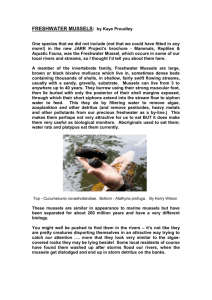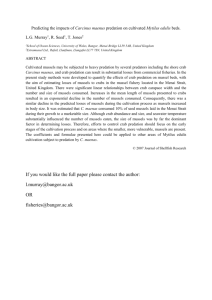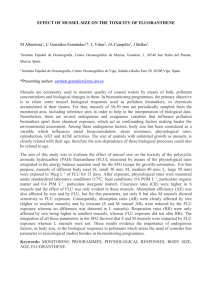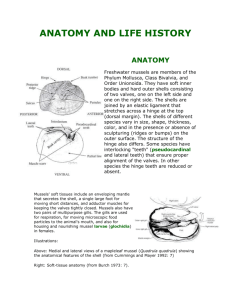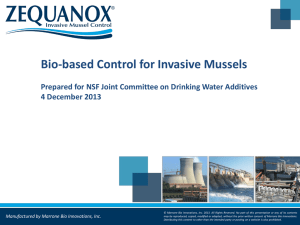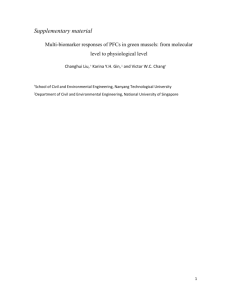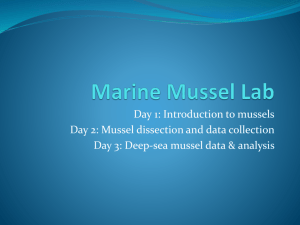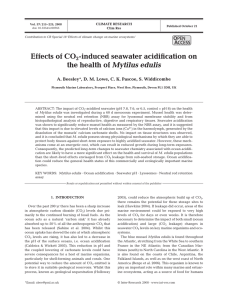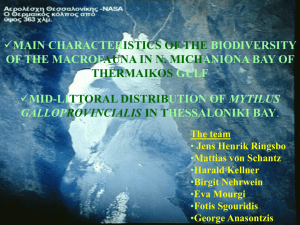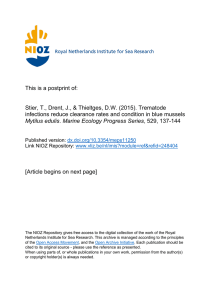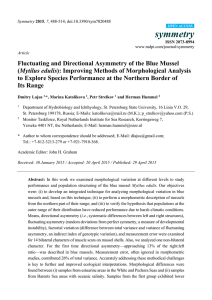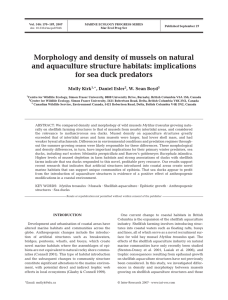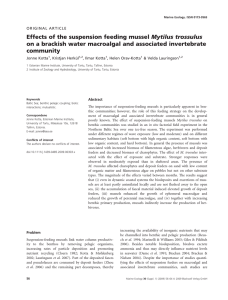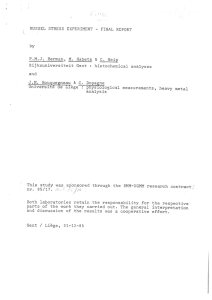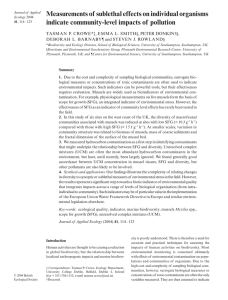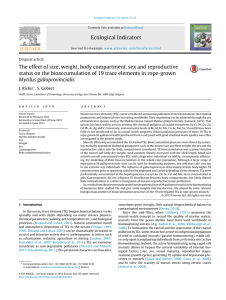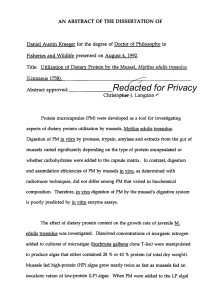The Blue Mussel Project
advertisement
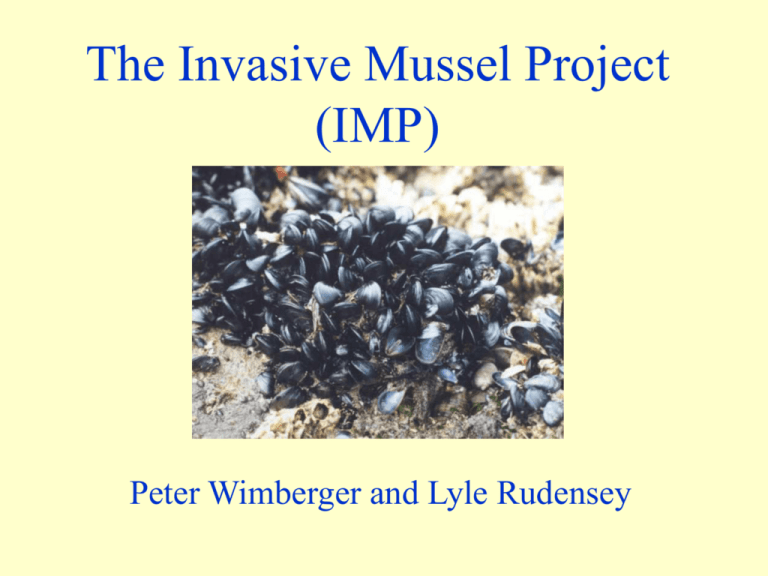
The Invasive Mussel Project (IMP) Peter Wimberger and Lyle Rudensey Genetics and Exotic Mussels • Marine Invasive Species • Blue Mussels and the Species Problem • Blue Mussels on the West Coast and Puget Sound • Genetic Monitoring of the Mediterranean Blue Mussel Spartina or Cordgrass European Green Crab Manila Clams Ciona – a tunicate Asian Copepod Where do they come from? Shipping – ballast water Aquaculture Why are they a problem? • Take over space/ outcompete natives • Introduce Disease • Economic Impacts ($100 billion/year!) • Impact Endangered and Threatened Species • Predators • Hybridize with native species SPECIES CONCEPTS Biological Species Concept Reproductive Isolation is key, but what about hybrids? Morphological Species Concept Species differ consistently in form Concept that is most used In practice – Species are: a) groups of individuals or populations that are reproductively isolated from each other or b) groups that for the most part retain their genetic identity over most of their range. A little mussel history Lamy – 1936 Described group of species including Mytilus edulis, M. galloprovincialis and M. trossulus (our native species) Soot Ryen – 1955 Lumped all species together as subspecies and races of M.edulis Numerous workers – early 1990s Resurrect earlier 3 species as result of genetic work Mytilus edulis – north Atlantic (both coasts) Mytilus galloprovincialis – Mediterranean and Atlantic to England Mytilus trossulus – “Our” native – Pacific coast and NW Atlantic All species can hybridize More Mussel History Mediterranean blue mussels introduced to Pacific coast early 20th century through ballast water. Now used extensively in aquaculture (meatier, grows quickly, disease resistant) Taken over southern Californian coastline, established in SF Bay, increasingly common in Washington and BC Blue Mussels are Sibling Species - very tough to tell apart trossulus gallos hybrids Genetics can do the trick! PCR – Polymerase Chain Reaction Way of making LOTS of specific piece of DNA Revolutionized molecular biology– Nobel Prize ‘92 How does PCR work? PCR Genetic Markers Now, a number of genes w/ unique alleles in the three species Byssal Thread Protein variants M. edulis 180 bp M. trossulus 168 bp M. galloprov. 126 bp PCR Gel 168 bp 128 bp Mt Hybrid Mg We know little about spread of gallo mussels in Puget Sound/WA • First documented 1979 • Small surveys documented presence of gallos and hybrids in Puget Sound and Strait of Juan de Fuca in past 10 years • Culture of gallos spreading including to SJI • We have found hybrids throughout Puget Sound Aquaculture will increase Potential ecological impact - unknown • In southern California, gallo now only mussel in intertidal • In South Africa, gallo mussels have taken over parts of intertidal and altered community structure • Here - ? Behooves us to know where it is and determine potential ecological effects First question: where are gallos? Location Trossulus Gallo Hybrids Totten Inlet 27 12 25 Tacoma 36 0 19 South Sound PS Totals 41 1 1 136 18 70 Second question: Can we find morphological characters to distinguish the two species and hybrids? Length Width And Height (not pictured) 60 Heigh t (mm) 50 40 G T 30 T/G 20 10 0 0 20 40 60 80 10 0 Le ngth (mm) 12 0 14 0 16 0 Take-home messages •Genetics provides a reliable way of distinguishing mussel species and hybrids •Shape isn’t a reliable indicator of species identity •Even though you can’t tell a book by its cover, size does matter – mussels over 65 mm are probably gallos or hybrids. IMP participants (IMPS) can monitor and measure mussels near their schools and contribute to a growing database.


